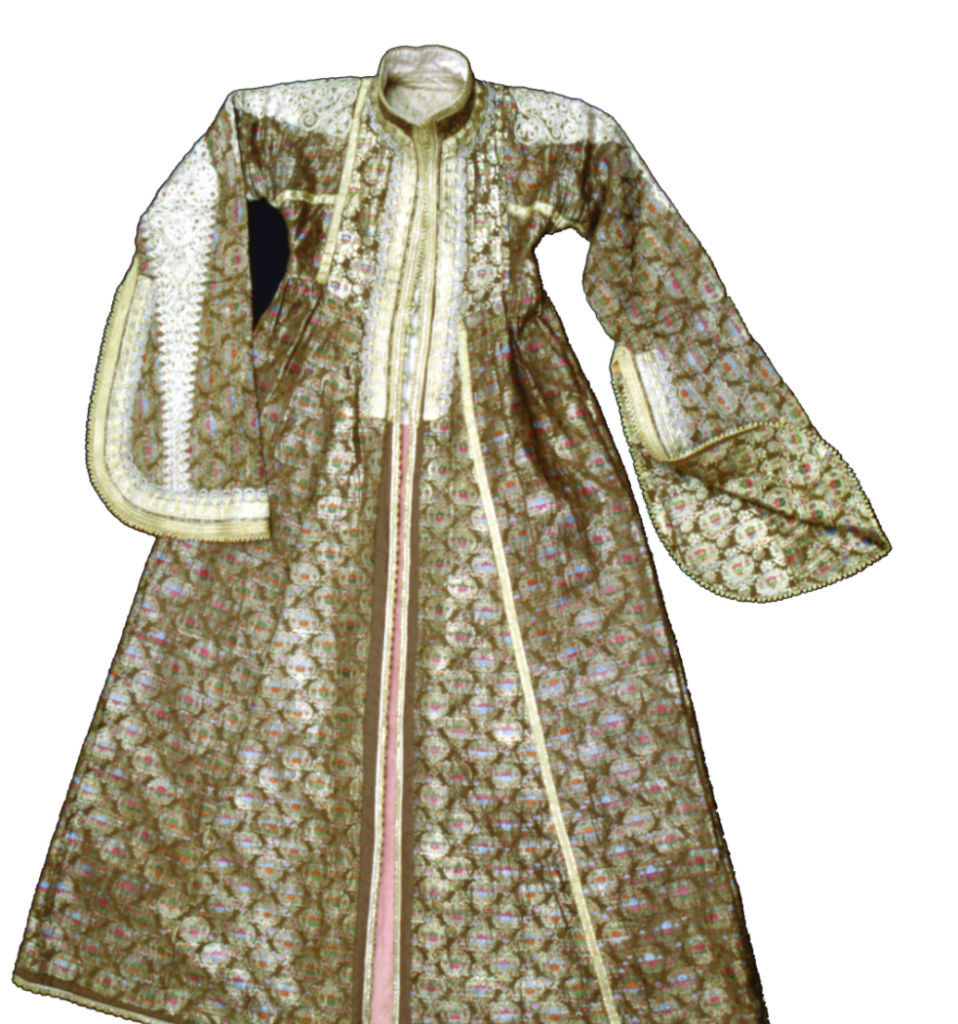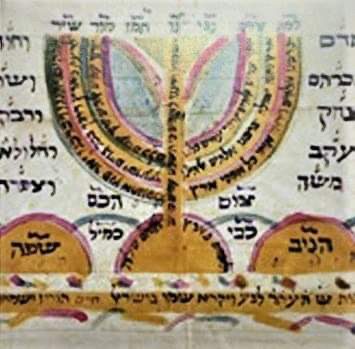There was no recognisably Jewish form of dress by which the people of the Diaspora could be distinguished or identified. They dressed in accordance with the norms of the various places they lived in, taking account of climate and local materials, and influenced by local customs and the dictates of local authorities.

Source of the photograph: The Jewish Museum of Greece, https://www.jewishmuseum.gr
This was true of communities in Greece too. Apart from the Sephardic Jews of Thessaloniki, who had Hispano-medieval origins, Jewish people dressed no differently from their fellow countrymen of other religious beliefs from late antiquity through Byzantine times and down to the Ottoman period. Under the multi-cultural, multi-religious Ottoman Empire, dress was frequently dictated officially in decrees issued by the sultan, imposing or prohibiting things such as certain colours or fabrics. Clothes then developed into a sort of communication code signalling financial, social and family status, age and even religious belief. From the 16th century down to the 19th century, a long dark overcoat, the traditional tzube, was the norm for all male subjects of the Ottoman Empire, including Jewish men. When outside the home, women had to cover their whole body with a veil or feratze. In private and on important religious and social occasions they were allowed to wear whatever was customary in their own community.

Source of the photograph: The Jewish Museum of Greece, https://www.jewishmuseum.gr
The clothes worn by the Jewish men of Ioannina were no different from those of the Christian townspeople. A long dark overcoat, an equally long wraparound inner garment of thinner fabric, a wide belt around the waist, a turban made of blue cloth, a fez or felt cap on the head and yellow leather shoes were the typical dress worn by Jews in Ioannina as well as in most towns and cities. The Jewish women of Ioannina didn’t wear on festive occasions the heavily embroidered pirpiri or sleeveless cape over their robe as their Christian neighbours, but dressed in one of the older fashions for women in Ottoman towns and cities, consisting of the very basic long chemise or smock with embroidery round the neck, cuffs and hem. With this they wore a wide shalvari or toumani (pantaloons) reaching down to their ankles and made of silk or taffeta. They wore a sleeveless waistcoat on the upper body. The most important garment obviously had its origins in the east and was the long-sleeved anteri, close-fitting and open down the front, but wide and gathered across the back, rather like a long-sleeved robe or overcoat. Over this they wore a cloth sash round the waist and a filigree belt with a buckle on top of that. An older version of this type of dress may also have had an apron which served a ritual or ornamental purpose rather than a practical one, given the fact that Ioannina was a large, urban community. On their heads they wore a small beret held in place with a scarf and secured with a gold embroidered chin strap. The crown of the beret was usually adorned with a round piece of silver jewellery called a tepeliki, there would also be a tassel made of spiral gilt thread. Beret decorations reflected the woman’s financial and social status.
Historical events like the disintegration of the Ottoman Empire, the development of closer ties with the West, the modernisation of the new state of Greece, and the rise of its urban society and urban mentality all contributed to the decline of the traditional form of dress which began in the mid 19th century and was even more noticeable in the early 20th century. Even in its early days this general tendency was encouraging and the more progressive Jews of Ioannina certainly followed it. By the end of World War II traditional forms of dress had ceased to be a feature of everyday life.
Source of texts and photos: The Jewish Museum of Greece, https://www.jewishmuseum.gr
